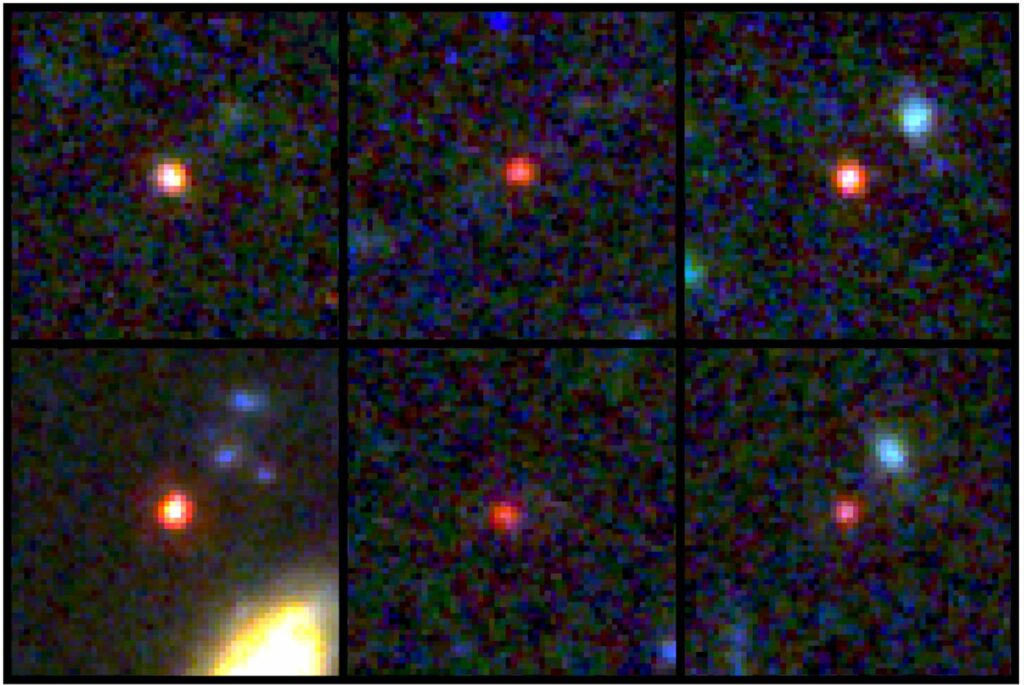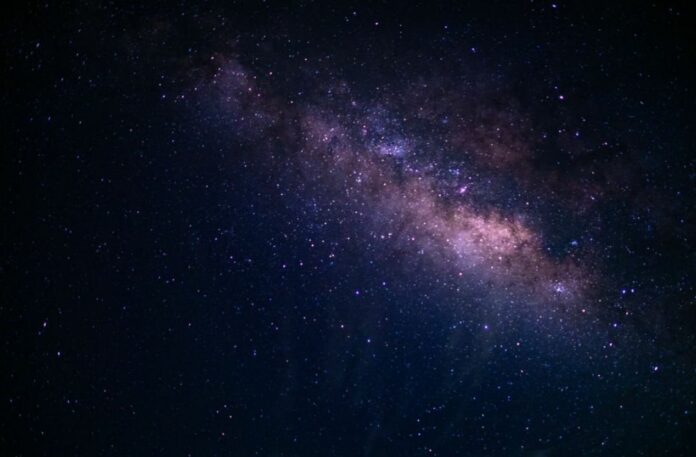Astronomers have discovered the seemingly impossible.
By utilizing the cutting-edge James Webb Space Telescope, astronomers have made an incredible discovery that appears to be beyond belief.
They have observed potential galaxies that are massive beyond imagination at the very dawn of time, weighing up to 100 billion times the mass of the Sun.
If these findings are validated, it would mean that these galaxies contain more mass than was previously estimated to exist in the entire Universe during that epoch.
In a new report, an international team of astrophysicists found six possible galaxies hiding in images from the James Webb Space Telescope. These objects are so big and formed so early in the universe’s history that current cosmological theory says they shouldn’t be possible.
Potential candidate galaxies stretch back more than 13 billion years ago, to around 500 to 700 million years after the Big Bang. Moreover, they are enormous, holding nearly as many stars as the present-day Milky Way Galaxy.
“It’s bananas,” remarks co-author Erica Nelson, pointing out, “you just don’t expect the early universe to be able to organize itself that quickly. These galaxies should not have had time to form.”
Nelson and her colleagues, including first author Ivo Labbé of Australia’s Swinburne University of Technology, published their findings in the journal Nature today.
The recent discoveries are not the first galaxies detected by James Webb, the most powerful telescope which was launched in December 2021. Another group of scientists discovered four galaxies last year that likely formed from gas roughly 350 million years after the Big Bang. Yet in comparison to the new galaxies, those objects were practically shrimpy, with many times less star mass.
Further evidence is needed to determine if these galaxies are as large as they seem and as old as they appear. But, their early findings provide us a tantalizing glimpse of James Webb’s potential to revolutionize astronomy textbooks.
“Another possibility is that these things are a different kind of weird object, such as faint quasars, which would be just as interesting,” adds Nelson.
“The six galaxies we found are more than 12 billion years old, only 500 to 700 million years after the Big Bang, reaching sizes up to 100 billion times the mass of our sun. This is too big to even exist within current models,” adds Professor Ivo Labbé.
“One alternative, equally fascinating, is that some of the objects belong to a new class of emerging supermassive black holes, never seen before.”
Blurred dots
Last year, Nelson and her international colleagues from the United States, Australia, Denmark, and Spain organized an ad hoc team to analyze the data James Webb was transmitting back to Earth.
Their most recent discoveries are from the Cosmic Evolution Early Release Science (CEERS) Survey carried out by the telescope. These photos go deep into a piece of sky near the Big Dipper—a somewhat uninteresting, at first appearance, area of space initially photographed by the Hubble Space Telescope in the 1990s.

Nelson was inspecting a postage stamp-sized area of one photograph when she saw something unusual: a few “fuzzy dots” of light that seemed much too brilliant to be genuine.
“They were so red and so bright,” Nelson remarks. “We weren’t expecting to see them.”
In astronomy, she said, red light usually means old light. According to Nelson, the cosmos has been expanding from the beginning of time. When the universe expands, galaxies and other astronomical objects move further apart, and the light they produce stretches out; this is analogous to saltwater taffy on a cosmic scale. To human eyes, light seems redder the more it extends. (Light from objects approaching Earth seems bluer, in comparison.)
Using calculations, they determined that these ancient galaxies were comparable in size to the Milky Way, containing tens to hundreds of billions of sun-sized stars’ worth of material.
But, it’s unlikely that these early galaxies were quite similar to our own.
According to Nelson, “the Milky Way forms about one to two new star every year. Some of these galaxies would have to be forming hundreds of new stars a year for the entire history of the universe.”
Nelson and her colleagues want to employ James Webb to learn more about these odd items, but they’ve already seen enough to spark their interest. To begin with, calculations indicate that there should not have been enough normal matter (the sort that forms up planets and human beings) at that period to generate that many stars so rapidly.
“If even one of these galaxies is real, it will push against the limits of our understanding of cosmology,” Nelson adds.
Source: 10.1038/s41586-023-05786-2
Image Credit: Getty and NASA, ESA, CSA, I. Labbe (Swinburne University of Technology). Image processing: G. Brammer (Niels Bohr Institute’s Cosmic Dawn Center at the University of Copenhagen)
